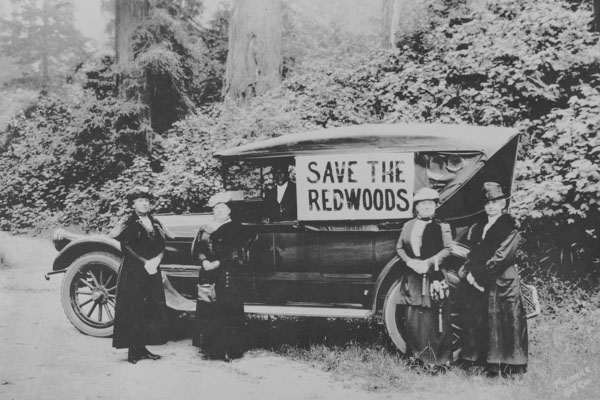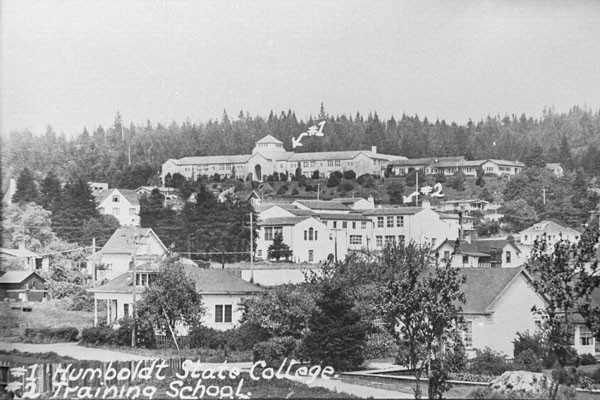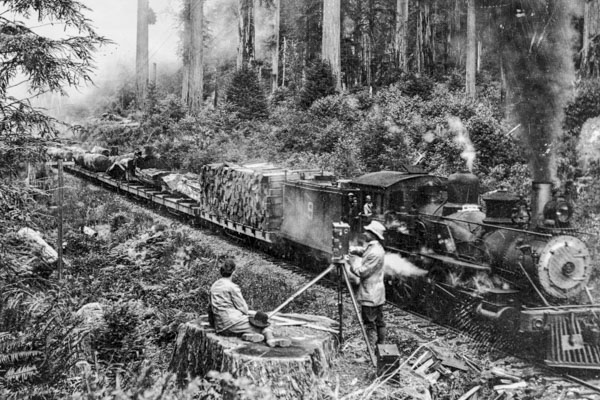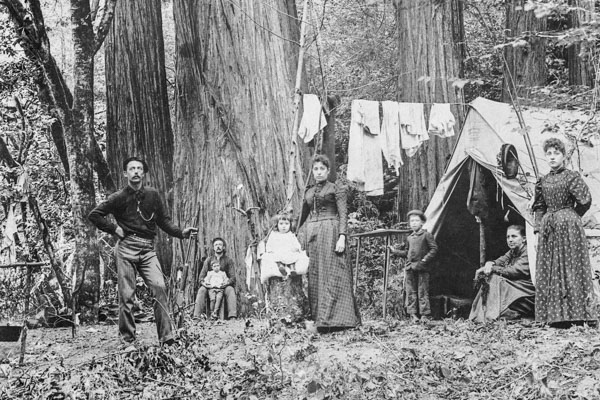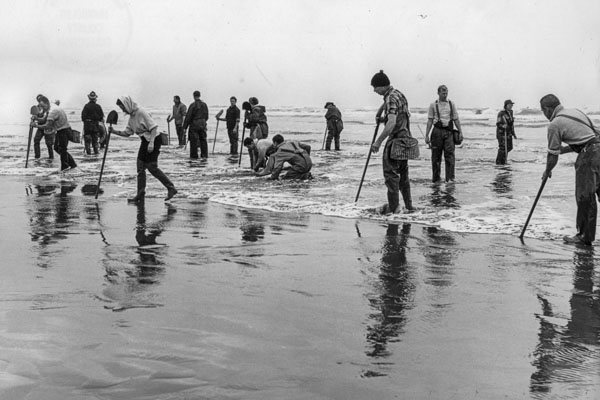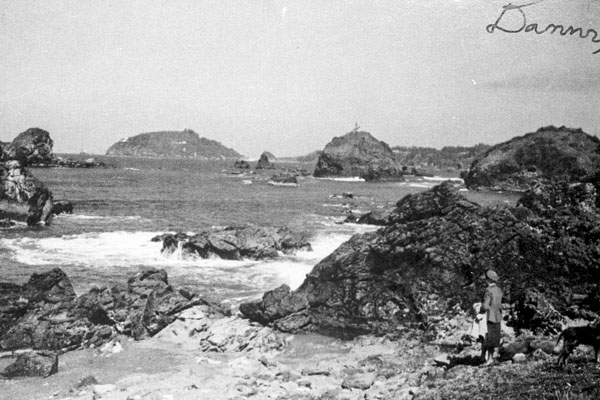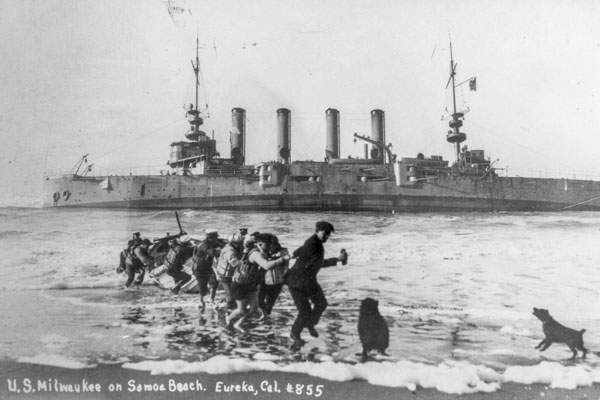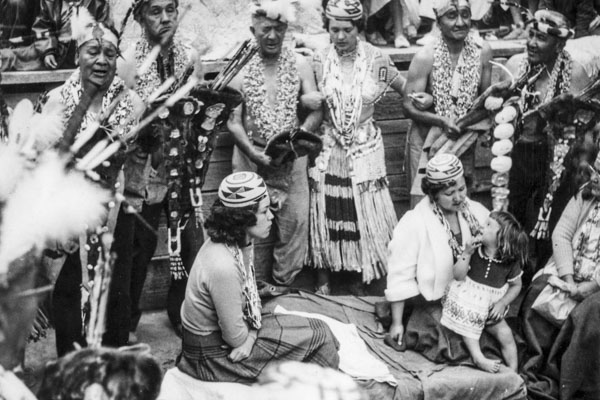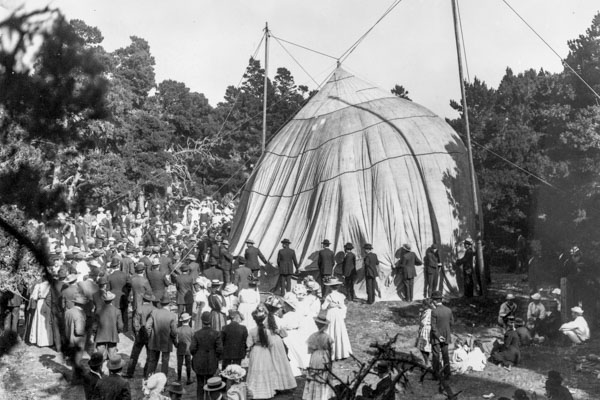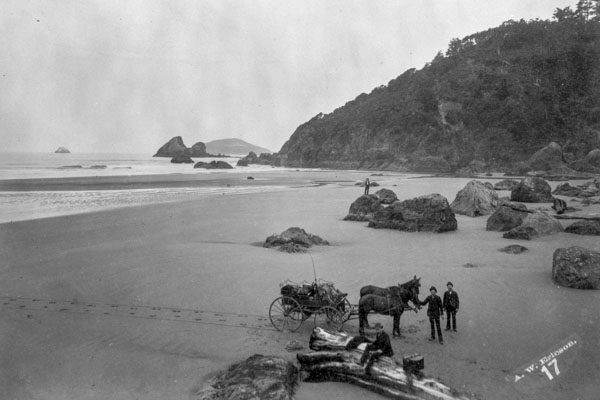You are here
Ericson Photograph Collection - Finding Aid
Abstract
Copyright
Biographical Information
Scope and Content of the Collection
Arrangement of the Collection
Collection Number
1999.02
Contact Information
The University Library, Special Collections
Cal Poly Humboldt
One Harpst Street
Arcata, California 95521
Processed By
Edith Butler, MA, CA
Date Collection Processed
2001; Finding Aid updated 2012
Language
English
Collection Creator
Ericson, A. W. (Augustus William), 1848-1927; Edgar Ericson, Richard Ericson
Dates Covered by Collection
1880s-1920s
Size of Collection
497 items- glass plate negatives
Abstract
The Ericson Collection depicts a wide variety of everyday northwest California scenes and activities from the 1880s through the 1920s. Lumber industry, Native Americans, city and village street scenes (primarily Arcata), schools, portraits, and scenic views are the featured subjects of this collection. The primary photographer represented is A.W. Ericson with some by other family members.
Access
Digital representations of all original glass plate negatives are available.
Copyright
Copyright has not been assigned to Cal Poly Humboldt. To obtain permission to publish or to reproduce in any format, please contact the Special Collections Librarian.
Acquisition Information
Gifted to Cal Poly Humboldt beginning circa 1964 and circa 1970 by Mrs. Ella Bryan, daughter of A.W. Ericson.
Funding
This project was supported in part by the U.S. Institute of Museum and Library Services under the provisions of the Library Services and Technology Act, administered by the State Librarian.
Biographical Information
Augustus William Ericson (1848-1927) was born in Orebro, Sweden. At age eleven he started a printing apprenticeship, the same business his father was in, and later had an apprenticeship in the dry goods business. When he was eighteen Ericson, without his parent's approval, left Sweden and came to the United States. He first took a job in Chicago and then found work in a logging operation in Michigan.
A.W. (Gus) Ericson took up photography in about 1879 after he had lived in Humboldt County for nine years. From 1869-1876 he lived in Trinidad while working in the Hooper Brothers lumbering enterprise and then in a retail store. Ericson's logging and mill experience gave him a familiarity with the industry that worked to his advantage when he later photographed woods workers, timberlands, and logging technology.
In 1876 he settled in Arcata and started a career as the proprietor of a series of retail businesses. The nature of products and services he marketed changed over the years; first it was pharmaceutical and stationery, later it was a printing service, and eventually it was solely photography. Family members joined the ventures. His brother Richard Ericson (1843-1924) joined A.W. upon his arrival from Sweden in 1882. Later Augustus' son, Edgar, (1887-1961) joined the business. As Ericson entered retirement Edgar and his sister, Ella Ericson Bryan, took over the business and maintained the Ericson Company until 1955.
The publication Eureka and Humboldt County by the R.M. Thompson & Co., published around 1896 notes, on page 89, that Richard was also considered a photographer. Newspaper accounts in the Arcata Union during 1908 begin mentioning that Ed (Edgar) was also taking photographs. Earlier accounts noted that Ed accompanied his father on photo taking excursions and later accounts continue noting that Ed was taking photographs. Although Richard and Edgar did take photographs A.W. is the one credited with the vast majority of the images taken outside the studio and as the one with the artistic talent.
Ericson's work was widely published and appreciated during his lifetime. His images of industries, agriculture, and businesses were used for fairs and expositions, school books, literary publications, and civic promotional purposes.
Ericson photography is the subject of two books authored by photohistorian Peter Palmquist. Extensive biographical information and northwest California cultural information putting Ericson's work in historical context is available in each, especially Photographers of the Humboldt Bay Region, A.W. Ericson. These works have provided most of the information for this brief biographical note and researchers will find considerable information by consulting these sources.
Scope and Content of the Collection
The Ericson Photograph Collection (Accession # 1999.02.) is comprised of the 497 glass plate negatives attributed to the A.W. Ericson Co. and predecessor and successor names. It depicts a wide variety of northwest California scenes and activities from circa 1880-circa 1925. Street and town scenes, lumber industry, Native American life and ceremonies, shipbuilding, schools, celebrations, landscapes, and portraits are the featured subjects of this collection. The collection is especially rich in its portrayal of northern Humboldt County.
Cal Poly Humboldt Library's efforts to make these images available to the public date back to 1965 with new prints and 35mm negatives for the images in the first donation. The next effort extended from the early 1970s to the mid 1980s when most of the images in the second donation were copy printed and new 4"x 5" negatives made. However the finishing steps of organizing these for ongoing researcher use were never completed.
In 1999 grant funds from the Library Services and Technology Act made it possible to assess the entire collection and to prepare the negatives for archival storage. As it became evident that copy prints and copy negatives for the vast majority of the collection already existed a decision was made to go forward with the long-term goal of digitizing the collection and making the images available through the Online Archive of California. Finishing the organizing of the unprocessed copy prints and copy negatives was woven into this expanded project. The various numbers that were assigned to many of the images in previous organizing efforts have been noted in the database records.
During the early 1970s a renewed interest in Ericson's work began and many of his images have been published since that time. This is due largely to the fortunate coincidence of Peter Palmquist's (then Cal Poly Humboldt's campus photographer) growing interest in historical photographs and the donation of the glass plate negatives to the University. Ericson's contribution to the region's historical record has been repeatedly acknowledged. His images of lumbering, Native Americans and town life are widely studied and admired. It should be noted, however, that some of the images of Native American persons and events deal with cultural and ceremonial matters and are thus considered to be sensitive.
Since Ericson's images of Native Americans are in continuous demand for documentation and illustrative purposes a few comments about Ericson's work with Native Americans may be useful. At least two sources indicate that Ericson paid Indians to allow themselves to be photographed. A footnote in Pearsall's History and Genealogy of The Pearsall Family in England and America (p.1625) states: "All of the Indian pictures relating to the Klamath River were taken by A.W. Ericson of Arcata, Humboldt County, California, from ten to fifteen years later than my stay on that river. During my visit it would not have been possible to have taken the pictures on account of their being superstitious and it was with great difficulty and the gifts of large sums of money that Mr. Ericson was able to get a few pictures. Some of them even after they had severally received from him as much as sixty dollars ran away and kept the money."
A notice in the September 16, 1893 issue of the Arcata Union reads: "A.W. Ericson returned from a weeks trip to Hoopa Thursday. He procured a number of excellent views of the Red-Headed Woodpecker and White-Deer-Skin dances. Mr. Ericson had to pay them $5 before he could get a picture and then had to catch them on the jump...."
At times Ericson was inconsistent in his captions, and he was particularly so when it came to attributing geographic location and tribal affiliation for photographs of Indians. Lastly, in recent years researchers have puzzled over the photos of the "Jump Dance" being titled "Red Woodpecker Dance." Perhaps the explanation for this misnaming can be traced to news accounts from the 1890s (Arcata Union September 9, and 16, 1893) and to articles such as the one by Winifred S. Fry which was published in a 1904 issue of Out West where these images' captions give the ceremony that name. Unfortunately the time constraints of the project did not allow for additional research. Sources listed in the Bibliography will be helpful in researching Ericson and his era in northwest California. Any corrections or additional information regarding the collection are invited and should be made to the Special Collections Librarian at the Cal Poly Humboldt Library.
Arrangement of the Collection
Condition
After cleaning, the glass plate negatives were housed in double-scored glass plate negative folders of acid free and lignin free paper. The condition of the image itself ranges from nearly perfect to seriously deteriorated. Every negative was digitized regardless of condition. All of the glass plate negatives were retained and are now in permanent archival storage.
Thirty-eight glass plate negatives (primarily 1999.02.0466-0497) were either broken or so severely cracked that repair was necessary before digitizing could occur. After cleaning they were reassembled and placed between two new pieces of picture glass. These materials were held together by archival quality pressure sensitive linen tape. When viewed online the tape is visible at the edges of the images. In one image (1999.02.0472) pieces of emulsion were completely or partially separated from the glass and by reassembling the pieces we have been able to recover the image.
Digitizing
The digitizing was performed by Octavo in Oakland, California, as follows:
Imaging specifications:
Camera system: Octavo Digital Imaging Laboratory v1.4, lighting configured for glass plate negatives.
Image specification: 6000 x 8000 pixels at 24-bit (RGB).
Color specification: ICC Color profile with custom per-image density levels.
File format specification: Uncompressed TIF 6.0. .
Archive media: Archival grade CD-R supplied by Matsui (phthalocyanine dye with silver reflector).
Archive format: ISO/HSF hybrid CD-ROM.
Derivative specifications:
Presentation: inversed positive (brightness inversed, color normalized).
Thumbnail size: 125 x 94 pixels
Browsing size: 700 x 525 pixels
Detail size: 2000 x 1500 pixels
File format: JPEG
Descriptive information, comments, and previous numbers for each image have been entered into an Access database. Information entered into the database was taken from the image itself, notes on the back of prints, envelopes, information from knowledgeable researchers, and the archivist's knowledge of the region as follows:
Title:
Titles were taken from the image itself, the envelope, a copy negative where it included the studio's original title, or were supplied by the project archivist. Titles not directly attributable to the photographer's studio are bracketed [ ]. If the source of the title is unknown it is indicated by [/unknown]. Titles created by the project archivist during processing are simply bracketed [ ].
Photographer:
Photographer is listed as Ericson. A.W. Ericson's name often appears on an image and it is widely believed that he took most of the images. Newspaper and other accounts indicate that both Edgar and Richard Ericson took photos but there is no certainty as to exactly which ones were taken by these other family members.
Photographer's Number:
These numbers usually appear on the negative, but in a few instances they were taken from prints.
Date:
Most of the images are undated.
Physical Description and Dimensions:
This refers to the original negative. Black and white is abbreviated as "b&w". Dimensions are given in inches. In addition to condition, damage is noted by "cr" for cracked, "cc" for chipped corner, "bc" for broken corner and "br" for broken.
Subject/Genre:
Subject terms and geographical place names were drawn primarily from lists already in use in the Library's Humboldt County Collection. When necessary new subject and genre terms were added using Place Names of Humboldt County, California by Dennis Turner, Library of Congress Subject Headings and Thesaurus for Graphic Materials (1995) by the Prints and Photographs Division of the Library of Congress. (The term "Essex" has been used to include Vance's lands up Lindsey Creek watershed.)
Names:
Most individuals are unidentified. More information is available for the portraits of Native Americans and for members of the Ericson family than for any other group of images. When a name is known it is recorded in this field and/or there may be a note in the Comments field.
Region:
To assist users in locating images from broad geographic areas a region designation has been assigned. Numerical values are given to nine areas of Humboldt County, defined primarily by watershed, and eight values are given to describe other geographical locations. This region categorization is also used in other photographic collections both at the HSU Library and at the Humboldt County Historical Society. A map portraying these regions is accessible at https://specialcollections.humboldt.edu/regions-map.
Comments:
Additional information about image content is noted in this field. The source of this information is noted in this field in parentheses at the end of the other comments.
One group of images has comments too lengthy to include in the "comments" field. These are images of Arcata taken from the hill now occupied by Cal Poly Humboldt. These images were annotated by G.W. Ripley and give a description of the view from his home which was near where the images were taken. They are 1999.02.0075, 1999.02.0143, 1999.02.0152, and 1999.02.0390. 1999.02.0169 was also taken from the same location. Ripley's annotations are quoted here just as they were written on the prints.
"No. 1
from left to Right white streak is sidewalk that runs up to State Nor[mal] big stump laying below walk is about 16ft through & about 30 ft long roots & all, white spot in trees is one of our neighbors house roof C Lesters then the 2 old snags on the hill about 250 or 275 high about 16 or 18 ft through & then GW Ripleys Henhouse Horse & Barn just the upper part of the house cant see the lower storie or the kitchen, & then Ripleys hill & wood pile where he is clearing it off, & then our neighbor Molander down below comes Ensigns & Kjer. Kjers is the house with the white roof another Ensign in the little white house on the north of her, Mathews up on the hill south, & the Rooff of Arnsons up by the State Normal north by the Electric lite post, lay these all down as they are No. & keep the trees to match & you will have the view just about as you get it from G.W. Ripleys, Arcata Calif"
[The negative for this image is not held by HSU.]
"No. 2
no. 2 & no. 3 takes in the most of the town that we can see from here, & also the north end of Humboldt Bay, it is six miles across the bay south to Eureka you can see some white specks over the east wharf they are Houses in Eureka there are 2 wharfs the west one is over one mile long you cant see only just the tops of the business buildings down town so you can see that we live in the hub sub"
[1999.02.0152]
"No. 3
the High school almost in center & first over the right hand of the H.S. you can see the flag pole of the Grammar School down on the lower part of town (west end of town) & the Arcata bottom on this & no 4. about 4 miles across it to the beach & it is about 8 miles long you can see the ranch Houses & the peninsula that runs down between the Bay & the Ocean. at the right hand upper corner is the place where they plant People if you will look abo [?] in from the right hand end through between the groves of trees you can see the Ocean."
[1999.02.0390]
"No. 4
This is the north end of town and also the north end of the Arcata Bottom. we can see the ocean from our house here about 12 or 14 miles along the beach was the clearest this morning that I ever saw. could see every house in Eureka as plane as you can see Arcata on these Pictures this the 7 day of May 1916 the black is the shadow of the state normal so you see you have the full circle it will go on either end but don't match either way look these over & show them to the Bro.s & sister of ours & then send them to Rosses & tell them to send them back to G.W. Ripley Arcata Humboldt Co Calif"
[1999.02.0075]
[unnumbered]
"We have a better view of this building from our house than this is. This picture will go on either end of the other 4 Pict but it doesn't match like the others do put this one on to no-1- with the sidewalk to match the one no-1- or better put the tops of the trees to match. & you will see that we live 2 blocks South and 2 blocks East. All of the entrance from the court no outside doors"
[diagram of a building]
[Last portion of text and diagram pertains to the temporary building at Humboldt State Normal]
[1999.02.00143]
Container List
View images in the Digital Archives: 1999.02.0001-1999.02.0497
Bibliography
Andrews, Ralph W. Photographers of the Frontier West: Their Lives and Works, 1875 to 1915. Seattle: Superior Publishing Company, 1965.
Arcata Union. Arcata Union, Inc.: Arcata , CA.
Bishoff, Liz. "California State Library Scanning Standards," September 29, 1999. (Accessed July 18, 2001).
Burgess, Rebekah. "Humboldt County Through the Camera's Lens: Three Photographers, Three Views." Humboldt Historian. Fall 2000; pp24-36.
Carranco, Lynwood and John T. Labbe. Logging The Redwoods. Caldwell, ID: The Caxton Printers, Ltd., 1975.
Carranco, Lynwood. Redwood Lumber Industry. San Marino, CA: Golden West Books, 1982.
_____________. and Henry L. Sorensen. Steam In The Redwoods. Caldwell, ID: The Caxton Printers, Ltd., 1988.
Loud, Llewellyn. Ethnogeography and Archaeology of the Wiyot Territory. University of California Publications in American Archaeology and Ethnology 14(3):221-436.
Palmquist, Peter E. Fine California Views: the photographs of A.W. Ericson. Eureka: Interface California Corporation, 1975.
____________ with Lincoln Kilian. The Photographers of the Humboldt Bay Region, A.W. Ericson. Arcata : Peter E. Palmquist, 1989.
Pearsall, Clarence. History and Genealogy of The Pearsall Family in England and America. San Francisco: H.S. Crocker, 1928; Vol. 3.
Turner, Dennis W. Place Names of Humboldt County, California: A compendium, 1542-1992. Orangevale: Dennis W. Turner, 1993.
Publications containing photographs that are in this collection and that were published during the late 19th and early 20th centuries. Some of these contain biographical information about the photographers as well.
The Californian. Souvenir Edition, v. 26, no.13, Dec. 24, 1910. [Eureka, CA: California Pub. Co.].
Cox, James. Our Own Country: Representing Our Native Land And Its Splendid Natural Scenery, Rivers, Lakes, Waterfalls, Geysers, Glaciers, Mountains, Canons, and Entrancing Landscapes, Reproduced In A Series Of Five Hundred Superb Original Photographs, In Royal Purple Colors, with Graphic Historical Descriptions And Character Sketches, Constitution a Complete Historic And Geographic Picturesque America. St. Louis, MO: The National Company, 1894.
Eddy, John Mathewson. In The Redwood's Realm: By-ways Of Wild Nature And Highways Of Industry As Found Under Forest Shades And Amidst Clover Blossoms In Humboldt County, California. San Francisco: D.S. Stanley & Co., 1893.
Fry, Winifred S. "Humboldt Indians." Out West. 1904 Vol. 21: 503-514.
Irvine, Leigh H. History of Humboldt County, California, with biographical sketches of the leading men and women of the county who have been identified with its growth and development from the early days to the present. Los Angeles: Historic Record Company, 1915.
L&M Print. Humboldt County, California. Eureka: Lambert & McKeehan, 1915.
Overland Monthly. Humboldt County and Its Resources. San Francisco: Overland Monthly Publishing Company, September 1896.
Redwood Lumber Manufacturing Association. The Home of the Redwood: A Souvenir of the Lumber Industry of California. San Francisco: Pacific Coast Wood and Iron, 1897.
R.M. Thompson & Co., Publishers. Eureka and Humboldt County: A Compilation of Facts for the Information of Business Men, Tourists and the World at Large. [San Francisco]: R.M. Thompson & Co., [1896?].
Times Publishing Company. Humboldt County California Wants Your Factory. Eureka: Times Publishing Company, 1917.
Wave Publishing Company. The Wave. Humboldt County Number, v. 20, no. 16, Oct. 14, 1899. San Francisco and Seattle: The Wave Publishing Company.
Related Works
Peter E. Palmquist Working Photograph Collection 2003.01
Subject Headings
Photography--California--Humboldt County--History.
Photographers--California--Humboldt County--History.
California--Pictorial works.
Humboldt County (Calif.)--History--Pictorial works.
Humboldt County (Calif.)--History.
